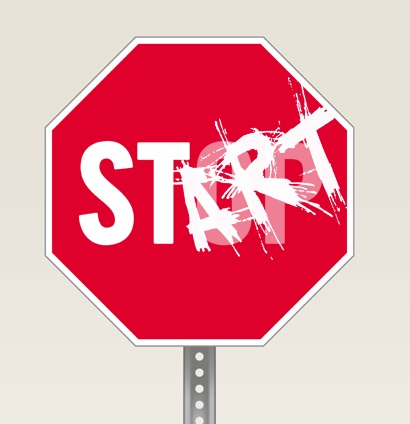Launch Team offers new AI and GEO Assessment
Get a Competitive Edge with Comprehensive AI & GEO Insights If you are beginning to notice an erosion in organic traffic and leads, it may be time to...
4 min read
Michele Nichols Fri, Dec 12, 2014

As important as it is to increase marketing activity and try new tactics, it’s just as critical to retire the worn-out or less effective ones. Doing so prevents burnout and improves your ROI.
What are your 2015 plans?
 I asked this of business leaders last month at the APOMA Tucson Technical Workshop. This workshop brought together optics and photonics professionals from all over the country to celebrate optics manufacturing in the U.S. and to share insights and techniques. Launch Team hosted a Marketing Roundtable to discuss the challenges and successes these companies have experienced; based on that conversation, here are four marketing activities we recommend that high tech companies start as well as four to stop.
I asked this of business leaders last month at the APOMA Tucson Technical Workshop. This workshop brought together optics and photonics professionals from all over the country to celebrate optics manufacturing in the U.S. and to share insights and techniques. Launch Team hosted a Marketing Roundtable to discuss the challenges and successes these companies have experienced; based on that conversation, here are four marketing activities we recommend that high tech companies start as well as four to stop.
Companies are shifting their video marketing strategy from a sales push to an educational approach. “YouTube is great for tutorials,” one participant commented. For equipment sales, instructional videos can be used to supplement manuals or even in place of manuals. Live chats or webinars can also be used to give a deeper look into a complex topic or technique.
Several roundtable participants have successfully used video to increase customer engagement. One equipment manufacturer has had customers comment on the usefulness of its how-to videos. Corning’s “A Day Made of Glass” video series raised the brand visibility and customer demand for its Gorilla Glass.
Some general guidelines when making a video:
Many manufacturers have found success thinking outside the branding box. Consider the following approaches:
Due to new Canadian email regulations and a need for improved follow-up, companies are making changes to their email marketing approach. Here are some takeaways:
Companies we spoke to are rethinking the Request-for-Quote process. Many have struggled with RFQ submissions that are too incomplete to accurately quote; however, they’re now seeing this as an opportunity to start a conversation. A run-through of part drawings and tolerances needed is a great excuse to pick up the phone and call prospects.
Besides RFQs, companies are adding new offers to generate leads, such as a free sample or whitepaper download. These types of content provide a greater depth of information to those who aren’t ready to contact you directly.
Many companies are also adding follow-up to their lead capture strategy. For new inbound leads, set up automated email nurture campaigns that include links to additional resources or ask for feedback. Your company will stay on your prospects’ radar, and your relevant content will help guide them down the sales funnel.
The companies we spoke with are seeing a drop in return from sites like ThomasNet and GlobalSpec. Google and other broad search engines are dominating the playing field, so instead of fighting a losing battle, we suggest a game plan that focuses on relevance and value. This includes:
We’re working with clients to cut ad spend for the new year and instead devote more effort to web activities. Because the buyer’s decision is more than half made by the time they contact your company, an inbound marketing strategy is key. Quality content on your website, blog, and social media sites let prospects do their own research while also bringing in leads.
One comment we heard was that things aren’t getting done – there is too little time, too little money, and key technical people are often on the road. One company’s CTO attended over two dozen tradeshows last year. For a small company, that can delay a launch timeline and eat up a big chunk of the marketing budget.
Company leaders agreed that their time was better spent at a few smaller shows rather than trying to attend many different shows. Smaller, more technical shows tend to be better for lead generation as they often center on a niche topic. When deciding which tradeshows to attend, consider:
We’re seeing a shift in thinking when it comes to China and other international markets. While companies have traditionally viewed China as a competitor, more are beginning to see it for its purchasing potential. Businesses are putting more effort into translation and re-evaluating their marketing style. “We are working to change our team mentality to be receptive of other cultures and languages,” said one manufacturer.

Get a Competitive Edge with Comprehensive AI & GEO Insights If you are beginning to notice an erosion in organic traffic and leads, it may be time to...

Updated on 6/10/24 The 80/20 rule or Pareto principle, is a long-standing business strategy that a lot of companies are applying right now to...

CES, Photonics West, and other industry trade shows are just around the corner. Deciding how you will collect and manage leads is an important part...